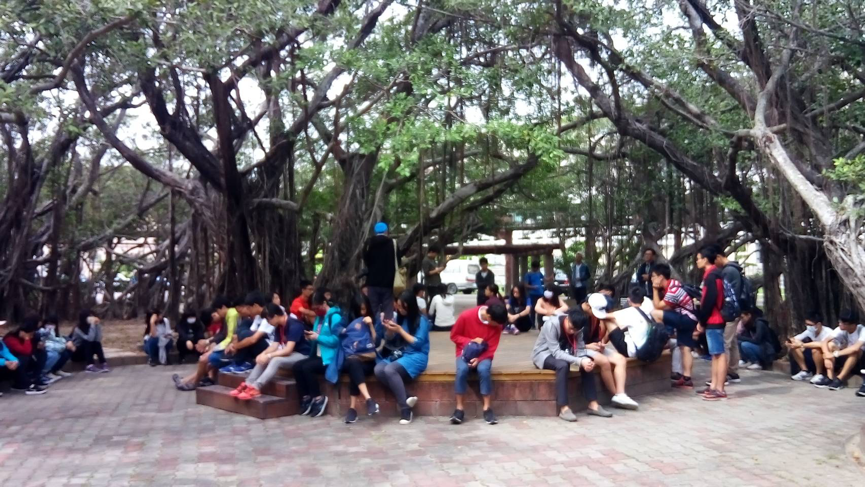

-
- 111th Academic Year
- The Avenue of NCKU Heritage – Area of Cultural Assets
- The Avenue of NCKU Heritage – Area of Environment and Ecology
- From country to city: Taveron and Han integration
- Kyrie: Pestilence and faith in the salty area
- Highlighting Western Chu-Wei
- Ginza: Commercial tracks from harbors to modern streets
- Tavocan and the Town of Hills
- The Museum: Ecological village and eco-museum
- The Stories about Major South Gate of Fu-Chen (Tainan)
- Modern new generation
- 110th Academic Year
- The Route of NCKU Students - The Cultural Assets Area
- NCKU Students' Route – Area of Cultural Assets
- Migration and Settlement of the Siraya Tribe
- Zengwen Creek’s nine bends and 18 turns, with astronomy, hydrology and humanities
- Exploring the Old Industries of Tainan City
- Journey of Beauty
- The Narrations of Water Resources, Agriculture and Livestock Industries
- Exploring Old Yuejin Harbor Area
- Lâu-Nuā Sió Sai Kha
- Highlighting Western Chu-Wei Area, Yu-Ler Street & Eastern Gate
- 109th Academic Year
- NCKU Students' Route – Area of Cultural Assets
- NCKU Students' Route – Area of Environment and Ecology
- Migration and Settlement of the Siraya Tribe
- Old Taijiang Inner Sea: Its Previous and Current Existence
- Lâu-noā Sió-sai-kha
- Exploring the Old Industries of Tainan City
- The Exploitation of the Works of Nature-Journey about The Frost and The Flower of Salt
- Badlands and the Mountain City
- Age-old Stories from the South of the City
- The Magnificent of Zheng-Xing Street
- 108th Academic Year
- The Route of NCKU Students─The Cultural Assets Area
- NCKU Students' Route – Area of Environment and Ecology
- Ecology of Fishery and Sea Salt Harvesting─ The Nature and Culture of Tai-Jiang Lagoon
- Migration and Settlement of the Siraya Tribe
- Age-old Stories from the South of the City
- Exploring the Old Industries of Tainan City
- The Narrations of Water Resources, Agriculture and Livestock Industries
- Technology and Humanities Science Park and Cultural Archeology
- From Kū-Lâu to Sin-Lâu Hospital
- Folk Delicacy around Minor West Gate Area
- 107th Academic Year
- The Avenue for NCKU Students
- Exploring Old Occupations in Tainan
- Secret Literary Path of Tainan
- Migration and Settlement of the Siraya Tribe
- Old Tai Jang Inner Sea: Its Previous and Current Existence
- Five-Canal Harbor Area: The Water Gods and Import-Export Tradesmen
- Tradition and Innovation: Zhengxing Street and the Grand Market(Da Caishi)
- The Water Resource of Tainan Area
- The Grace of Yanshui Harbor: Rejuvenation of Yanshui and Hopi Settlements
- 106th Academic Year
- The Avenue of NCKU Students
- Gate of Urn-Shaped Castle and the Stony Plates
- Siraya People’s Migration and Their Journey to Settlement
- Zeelandia and the Retrospective Anping
- Old Taijang Inner Sea (Taijang Nei Hai ) : Its Previous and Current Existence
- Tradition and Innovation- Zhengxing Street and the Grand Market (Da Caishi )
- Qing Dynasty Government Official’s Trail-Chunan Old Street and Zhenbei Fang
- Five-Canal Harbor Area, the Water Gods and Import-Export Tradesmen
- Fantastic Trips to Know Sugar and Salt production
- Chikan Park Area and Historical Traces
- Secret Garden of Literature- From Taiwan Administration (Taiwan Fu) to Tainan Prefecture Hall (Tainan Zhou Ting)
- The Water World of Tainan Area
- 111th Academic Year
-
-
-
Old Taijiang Inner Sea: Its Previous and Current Existence
Route Introduction

Sacred Banyan Tree of Shierdian
Worshipping Creek Banks and Buddha Yuan-Hai Turning obstacles into safety
A legend on managing the flooding of TaijiangFloods from Zengwun Creek brought fertile land to Taijiang area; however, people who lived in the area also suffered from the frequent shifts of river courses, "moving creek," as it was called by local people.
When the creek flooded, people would move to a higher place.People developed a respect for nature as a way of life. Facing the inevitable difficulties and crisis brought to them by Mother Nature, local people worshipped nature to give strength and hope to their lives. The site where the villagers worshipped the creek bank is now flourished with banyan trees and a Yuanhai Buddha Temple.
"Worshipping" is ancient commoners' way of reflecting on their life and the environment, with which their bodies and souls were enlightened by the illumination of sincerity and respect. Residents of Shierdian implored General Guan Yu and General Chi as their patron gods for lives and properties. They planted three banyan trees and buried "seven-star lamps" under the trees to ward off "blind snakes". Today, the three trees have grown to the biggest banyan woods on the Western coast of Taiwan.
Yuanhai Buddha was in fact the spirits of victims during the floods. A temple was constructed to the south of the current Tien Ma Radio Station. This ancient piece of land, much battered by floods, witnessed the history of disasters in the shifting and rerouting of Zengwun Creek.
Every year, at the end of the 7th lunar month, villagers in this area worshipped Qingshui Zhushi, with offerings at the old river banks. The ceremony reminds all residents of the history their ancestors shared with the creek and courage of turning sorrows into hopes and the energy of creating new lives.
-